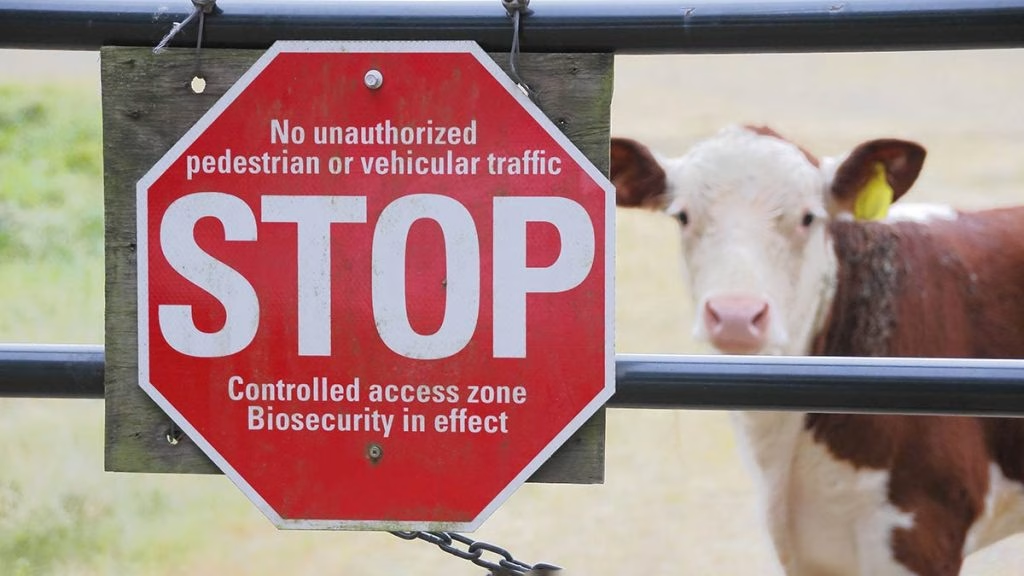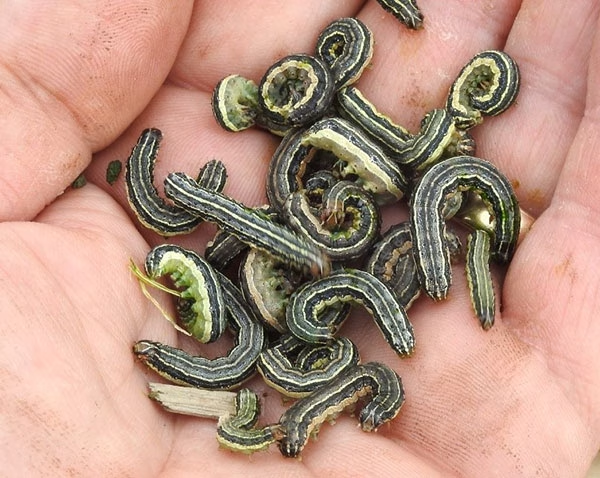Boost your farm’s biosecurity: Learn essential strategies to prevent dairy diseases. Are you ready to protect your cattle with effective farm, cattle, and people management?

The proverb “the best defense is a good offense” holds that preemptive methods are often the most successful in sports and the military. This concept directly applies to dairy production, as biosecurity measures are an essential offensive approach against cattle illnesses. The significance of biosecurity cannot be emphasized; it is critical for herd health and dairy farmers’ livelihoods. Dairy farms may reduce disease outbreak risks by proactively adopting biosecurity policies, assuring economic sustainability and animal welfare. These procedures are not just defensive; they are a proactive, empowering approach to illness prevention, putting farmers in control of their herds’ health.
Effective Farm Accessibility Management: Fortifying Against Disease
Effective farm accessibility management is critical for keeping a dairy farm disease-free. Everyone who enters the farm must wear personal protective equipment (PPE), which includes boots and gloves. Dairy farms may reduce contamination concerns by limiting visitor access and livestock movement. Creating a wall of separation on the farm helps to regulate outside interaction and minimize disease infiltration. Furthermore, disinfecting vehicle wheels and providing disposable footwear for guests are critical elements in ensuring the farm’s biosecurity.
Ensuring Rigorous Cattle Management Protocols: Imperative Strategies for Dairy Producers to Safeguard Herds Against Disease Outbreaks
Robust cow management techniques are critical in protecting herds from possible disease outbreaks. The first crucial step is the isolation of fresh or ill livestock. This practice, which is the responsibility of every dairy farmer, is critical to preventing the spread of diseases. Newly purchased animals should be isolated for at least 30 days before being brought to the main herd, thoroughly examined, and vaccinated. Ill cattle must be separated from the healthy group to avoid transmission.
Another essential technique is to milk isolated or ill animals separately. Use unique milking equipment or ensure it is well-cleaned and disinfected between usage. This reduces cross-contamination, safeguarding the whole herd from possible infections. The milking facility must also be thoroughly sanitized; equipment should be cleaned and disinfected after each use, and the facility should be deep cleaned regularly to provide a pathogen-free environment.
Furthermore, giving heat-treated colostrum and milk or milk replacer is critical in reducing disease transmission in young sheep. Colostrum and milk should be pasteurized at 140°F (60°C) for 60 minutes to remove dangerous germs while maintaining nutritional content. This method considerably lowers the danger of transferring illnesses like Johne’s disease or bovine TB to calves.
By meticulously applying these comprehensive processes within cow management protocols, dairy farmers may successfully protect their herds against disease outbreaks and assure their livestock’s long-term health and production.
Implementing Effective People Management Strategies: A Cornerstone in Minimizing Disease Transmission Risks on Dairy Farms
Managing human contact on the farm is crucial for reducing disease transmission risk. One of the most successful ways is to supply disposable footwear to guests. This method reduces the spread of infections that may be transmitted on shoes from other places. To execute this precaution, set up a dedicated space near the farm gate where guests may swap their footwear for disposable choices. Maintain a consistent supply of adequately sized disposable covers and provide visible signs to direct guests.
Furthermore, teaching agricultural workers about biosecurity protocols is critical. Begin by scheduling frequent training sessions emphasizing biosecurity’s significance in herd health. These lessons should address subjects including detecting infectious illness signs, wearing personal protective equipment (PPE), and washing hands effectively. Supplement this training with readily available teaching materials, such as posters and leaflets, strategically placed across the farm. Furthermore, it fosters a culture of responsibility by encouraging employees to report violations of biosecurity rules promptly.
Dairy farmers may minimize disease transmission risks and protect their herds’ general health and safety by strictly limiting farm visits and investing in ongoing education for farm staff.
Fortifying Against Nature: Strategies for Effective Pest and Wildlife Control
Preventing pests and wildlife from arriving on the farm is crucial to reducing disease transmission risk. Pests such as rodents, insects, and wild animals can carry pathogens that affect dairy cattle, leading to severe outbreaks. Effective pest and wildlife control protects livestock health and ensures a hygienic environment for dairy production.
To achieve successful pest and wildlife control, several methods can be implemented:
- Physical Barriers: High, durable fences and rodent-proof materials like metal sheeting can deter wildlife and tiny pests.
- Sanitation and Waste Management: Regularly removing waste and securely storing feed reduces pest attractants. In contrast, proper waste management minimizes insect breeding grounds.
- Biological and Chemical Controls: Use predator species or beneficial insects to naturally reduce pest populations. Employ chemical controls like insecticides and rodenticides judiciously, following safety guidelines.
- Habitat Modification: Trimming vegetation, draining standing water, and maintaining dry conditions make the farm less attractive to pests. Sealing cracks and reducing clutter also help.
- Regular Monitoring and Maintenance: Routine inspections and trap setups can identify pest activity early. Consistent maintenance ensures continued effectiveness.
By applying these strategies, dairy producers can significantly reduce the risk of disease transmission, safeguarding herd health and ensuring sustainable farm operations.
The Bottom Line
Finally, the success of dairy production depends on stringent biosecurity controls to keep animals safe and healthy. Prioritizing biosecurity enables farmers to minimize disease concerns actively, resulting in herd health, operational viability, and food quality. Stringent farm access management, strict livestock and human resource management, and effective pest control are all critical tactics. Feeding heat-treated colostrum and milk to young cattle lowers disease transmission. Adopting these procedures ensures the future of dairy farming. Farmers that embrace these methods with speed and determination actively avoid disease outbreaks rather than just waiting for them, demonstrating that the most significant defense is a potent offense.
Key Takeaways:
- Farm Accessibility: Limit access to the farm and establish a line of separation to minimize external contamination.
- Provide PPE: Ensure that personal protective equipment (PPE) is available for all visitors and staff.
- Control Visitors: Regulate the number of visitors and ensure they follow strict biosecurity protocols, including vehicle disinfection and providing disposable footwear.
- Cattle Movement: Restrict the movement of cattle between different areas to prevent cross-contamination.
- Isolation of Cattle: Isolate new or sick cattle and handle their milking separately to prevent disease spread.
- Sanitation: Thoroughly sanitize all facilities and equipment to maintain a clean environment.
- Pest and Wildlife Control: Implement measures to keep pests and wildlife away from the farm to protect against disease transmission.
- Nutritional Management: Feed heat-treated colostrum and milk or milk replacer to young livestock to limit disease transmission.
Summary;
Dairy production relies heavily on biosecurity measures to prevent cattle illnesses, ensure economic sustainability, and protect animal welfare. Farmers can control their herds’ health by wearing personal protective equipment, limiting visitor access, disinfecting vehicle wheels, and providing disposable footwear. Rigid cattle management protocols, such as isolating fresh or ill livestock, milking isolated animals separately, feeding heat-treated colostrum and milk, and pasteurizing at 140°F for 60 minutes, are essential for reducing disease transmission. Effective people management strategies, such as disposable footwear and teaching agricultural workers about biosecurity protocols, are also crucial. Fortifying against nature, such as physical barriers, sanitation, waste management, biological and chemical controls, habitat modification, and regular monitoring and maintenance, can prevent pests and wildlife from entering the farm. By applying these strategies, dairy producers can significantly reduce disease transmission risks, safeguard herd health, and ensure sustainable farm operations.












